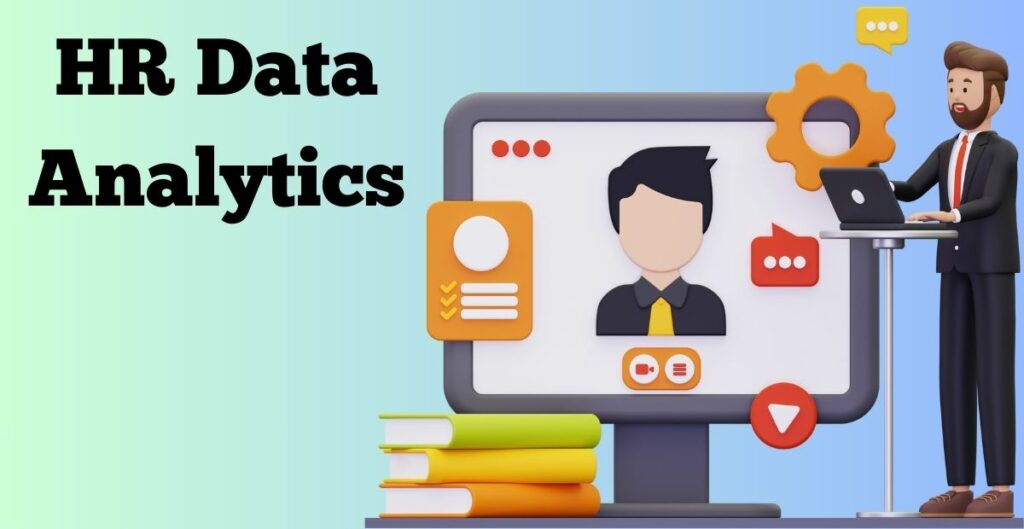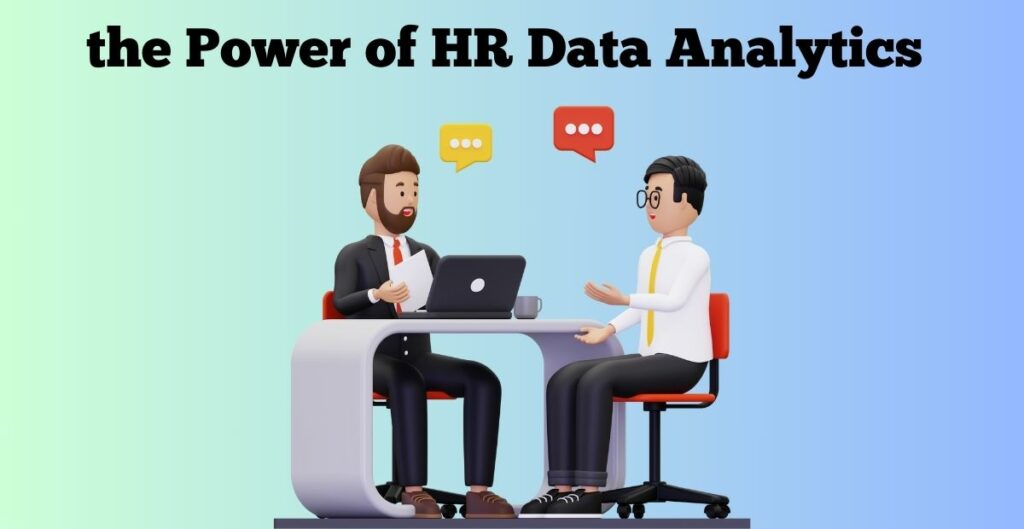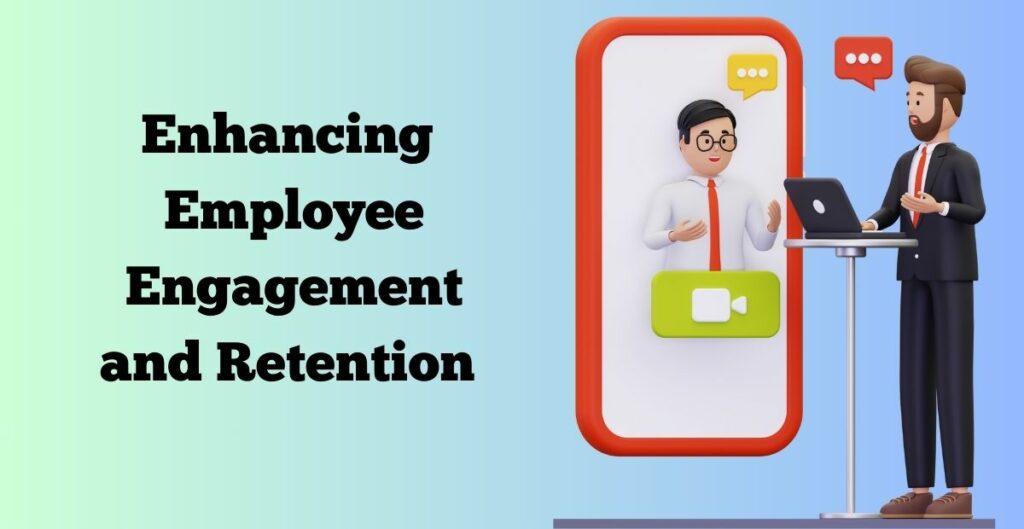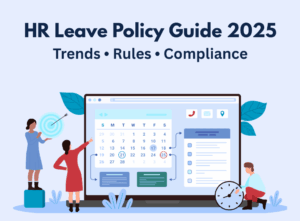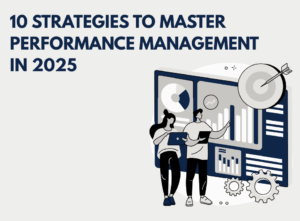Introduction to HR Data Analytics
The current digital age sees the emergence of a data-centric culture which translates to a massive shakeup in the way humans manage their workforce. Being away from the confines of clerical work, HR professionals are now put in a position where they can go head-to-head with other stakeholders in decision-making, using data analytics as a tool. This paradigm shift has propelled HR data analytics into the spotlight, revolutionizing how businesses manage their most valuable asset: the manners, customs, and traditions of their people.
Understanding the Role of HR Data Analytics in Management
Human resource management has remained imperative to the way an organization functions, but with the dispensation of data analytics, hitherto inaccessible information is now within the reach of key decision-makers. Through examining the large pool of employee data, organizations can find such patterns, trends, and correlations that give necessary information for the making of critical structural and personnel decisions in the HR sphere. From the probability of hiring an applicant and corporate responsiveness to employee engagement and retention, data analytics gives a global view of the labour market.
Importance of HR Data Analytics in Modern Businesses
In the tight business marketplace these days, data analytics is what gives companies that decisive factor. Analysis of HR through data analytics gives companies a chance to produce more in-depth information about their employees and therefore, they can align HR strategies closely with business goals. Through the use of data-driven insights, organizations stay on top of their recruitment endeavours, cultivate a standard of optimum employee productivity, and shape a culture of perpetual progress.
Evolution of HRMS and Payroll Software: Integrating Analytics
The advancement of HRMS and payroll software systems has been steadily moving forward along the road with the ever-increasing need for data analytics in HR. Now we have the past days astonishing and replacing the spreadsheet-based systems with dynamic entities. Nowadays, HR Data Analytics software applications are armed with much more in-depth and robust analytics that can be used to create and act on the data to make informed judgments. These self-service platforms can generate personalized dashboards as well as self-intelligent tools, which make it easy for companies, especially small businesses, to get the most out of their data.
When we get more insight into the sphere of HR data analytics, we see that it has a realistically broad influence not only within the structure of HR but also in general. It is a very clear driver of all the organizational processes that trigger the development of new strategies and technologies. Occasionally, in the following sections, we will deal with research, you will find that the work of HR will be divided into engagements of workers, and optimization of HR, and will define, what will be, in the future, the work of HR. In this voyage, see the power that HR data analytics holds to bring a transition.
Harnessing the Power of HR Data Analytics
HR data analytics has been a great asset in the making of many strategic decisions because it is one of the best tools to employ. Through an analysis of data points like employee turnover rates, performance scores, and engagement surveys, companies can develop HR strategies that act accordingly vis-a-vis the trends and patterns they identify. From succession planning and internal talent to organization reshuffling, empirically driven ideas guide HR leaders in making the best decisions that lead the business to a better place.
Identifying Key Performance Metrics for HR Data Analytics
Organizations should be able to drive HR data analytics only if they are in a position to pinpoint the core performance metrics that matter most for their business conduct. These metrics’ measures can differ depending on industries, firms, and goals, but typical examples may include apparent ones, such as employee retention rates, time-to-hire, and training effectiveness. As a result, through such monitoring and analysis of these metrics, organizations can evaluate how they have benefited from their HR initiatives and use evidenced-based tweaking as relevant.
Leveraging HR Data Analytics for Strategic Decision-Making
HR analytics data, a key factor in influencing strategic decision-making, is one of the core advantages of analytical human resource management. Through studying the performance quantities like mostly the employee retention rates, performance appraisals, and engagement surveys, an organization can probably recognize the mannerisms and tendencies that form their HR strategy. Leadership succession planning and talent development are examples of the use of data-based insight. The decision eventually results in making more real-world contributions affecting business positively.
Recruitment Processes with Data-Driven Insights
Recruiting is one of the essential HR functions that big data analysis can make a tremendous contribution to making the application process smooth. By considering so many recruitment aspects such as candidate sourcing channels, time to fill, and offer acceptance rates, the organization can easily find where improvements need to be made and accordingly optimize its recruitment operations. On the other side, data analytics can be used to provide a prospect with future requirement positions, giving the organization a way to act sooner in case of gaps in the talent and keep an edge on the competition.
In light of the increasing adoption of HR data analytics, the organization can implement an immense outlook toward strategic growth and the creation of innovative ideas. Data-driven insights empower HR data analytics pros to revolutionize their operations, promote employee engagement, and bear their organization in the right direction as the workplace is changing by technology, and hence it must keep up with the trend. We warmly invite you to walk along with us towards the new HR management direction, which useful data analytics may propel as HR data analytics is a vastly significant future-oriented approach to management.
Enhancing Employee Engagement and Retention
Employee engagement and employment are very intertwined with ensuring an organization remains functional. By creating a culture of engagement and treating employee satisfaction as a priority, businesses with this strategy will make their productivity grow, cut down the churn rate, and contribute to their long-term development. HR data analytics provides powerful tools for such efforts as big data creates a vast array of information, which includes employee behaviour, engagement, and preferences.
Utilizing Analytics to Understand Employee Behavior and Sentiment
HR data analytics provides a possibility for organizations to detect employee behaviour by measuring their fluctuations while building data on workplace emotions as well. Companies extensively use employee feedback through sources such as surveys, performance reviews, and communication platforms which helps to identify what works done and what needs to be improved. Recognizing what factors draw a line between employee joyfulness and engagement helps organizations to use effective career solutions for improving employee engagement.
Personalizing Employee Experiences through Data-Driven Insights
Personality is at the heart of a good unfolding of regulations. One of the key benefits of HR data analytics is that it enables organizations to customize their strategy so that they can individually cater to the peculiar needs and desires of each employee. Using information from topics like job responsibilities, work attitudes, and future career ambitions, businesses can design training sessions, development activities, and recognition plans that fit individual needs. The individual-targeted approach improves employee satisfaction which in turn also aids in employee retention efforts.
Predictive Analytics for Anticipating Employee Turnover
With predictive analytics, organizations can now forecast the problem of employee turnover and take it up before it happens. Through the evaluation of historical data and looking for characteristics or trends related to turnover, companies build models to figure out which employees are almost guaranteed to leave. Equipped with this knowledge, the human resource team develops and manipulates retention strategies like career development opportunities, mentorship programs, and financial incentives to hold on to the best employees as well as the decrease in turnover.
Organizations formulate a vision of the workplace where the input and the output of the workers are appreciated, inspired, and engaged. Being a strong tool in attaining this objective, HR data analytics obtains an increasingly important position. The applications of data-driven insights to decipher behaviour patterns, personalize experiences, and foresee churn can help in the formation of an engaged culture that can eventually lead to the success of the organization in the long run. Let us stroll together and we will see what the power of HR data analytics is in building up employee engagement and retention.
Optimizing HR Operations with Data
The time-based nature of HR management dictates that effectiveness is the foundation of high-performance HR. HR Data Analytics opens up a lot of potential with which you can enhance the operations and concurrently make it easy. Employing data-based insights enables businesses to overturn the whole notion of HR to increase effectiveness and the general level of performance in the enterprise.
Automating Mundane Tasks with HR Analytics
The employment of HR analytics allows firms to outsource tedious duties, thus improving the efficient use of precious time and effort in these companies’ quest for superiority. Through the flow of work and locating the sections ready for automation, companies can start using RPA and the technologies of other types and simplify administrative processes which include payroll processing, credits tracking, and benefits administration. This makes the performance more accurate, less time-consuming and reduces possible errors.
Improving Compliance and Risk Management through Data Analysis
With governance and risk monitoring being central, especially where regulations are concerned, compliance and governance are of uttermost importance for human resource departments. Utilization of HR data analytics can improve the ability of organizations to not only satisfy compliance requirements but also decrease undesired repercussions that may ensue. Employee records databases such as training certificates and regulatory changes for instance can be examined to discover the reasons for non-compliance and the latter to put in place preventive measures. Besides this, predictive analytics can foresee approaching compliance problems and work out their mitigation plans, so that risks do not aggravate.
Reducing Costs and Increasing Efficiency with Predictive
Predictive analytics makes a lot of HR issues preventable for organizations as it can be used for forecasting the future and making necessary preparations in advance to reduce costs and enhance performance. By studying historical data and discovering trends, businesses would be able to figure out what staffing is needed and predict what the business will be in the future. This can be translated into maximizing cost savings through the elimination of rugged spending and smoothing of the staff to needs. Furthermore using this analytics future outcomes can be predicted at the places where you can get the significant overall cost reduction by improving the processes this data can help you in continuous improvement and sustainable growth.
While the technology is still very young, the potential of HR analytics for companies to thrive in this space is vast. Through automating the banalities, improving compliance management and risk control, and introducing applied analytics for reducing costs and efficiency boosts, organizations can achieve dramatic performance and productivity breakthroughs. Be a part of our forum as we mount an expedition on the revolutionary effects of HR data analytics on HR.
Empowering HR Professionals with Advanced Tools
While in HR management today, HR professionals should employ traditional tactics, tox remains a fundamental strategy to maintain a coagulate in the ever-changing industry. Provisioning human workers in the changed technologies and practices of modern workplaces may be actualized effectively by arming HR professionals with new tools for this purpose. The talent quality can be improved by the HR departments through the use of cutting-edge technologies and applying innovative solutions in order thereby to optimize efficiency and produce strategic value for the organizations.
Exploring Advanced Analytics Features in HRMS and Payroll Software
Current HRMS and payroll s/w solutions are very competent to offer sophisticated analytical features that transform HR Data Analytics professionals to discover important decisions based on their data. They range from personalized dashboards, real-time reports, predictive analytics, and trend analysis to overall business intelligence and workflow integration that help enterprises have an advantage in insight. HR professionals are now able to make data-driven decisions, refine processes, and more, thanks to utilizing advances in analytics. In the end, this may directly impact the commercial success of the company.
Integrating Artificial Intelligence and Machine Learning for Smarter Decision-Making
Artificial intelligence (AI) and machine learning (ML) are the ones that are shaking our current human resource (HR) structure to the very core, phasing in a world where human resource managers are making better and more vital decisions than regular, uninformed decision-making managers. The use of AI and ML algorithms translates HR professionals into a tool to automate monotonous tasks, draw conclusions from large data, and identify hidden patterns and trends. AI and ML technologies enable instead of replacing some of the HR functions, such as candidate screening among others, influencing the decision-making processes positively while striving for efficiency and effectiveness at work.
Enhancing Security and Privacy Measures in HR Data Analytics
With the advancement of technology, organizations can analyze more employee data related to performance, habits, preferences, and so on. As they do so, the employee’s privacy and security become one of the most important issues. The security of HR should also consider the deployment of comprehensive security mechanisms that ensure the protection of employees’ sensitive data from unauthorized access, online breaches, and cybercrime. Leveraging encryption, access control, and data masking tools, organizations can, therefore, protect their employees and maintain regulatory compliance with laws such as the GDPR and CCPA. Besides these, developing well-defined data governance rules and undertaking periodic verification tests may help fulfill the data credibility and enhance loyalty within your staff.
With the integration of complex tools and technologies, the HR function will undergo a transformation, where the function will be integral, fervent, and data-centric. By identifying the concepts of HRMS advanced analytics and decision-making process powered by AI and ML, and HR data Analytics protection and privacy through implementing new technologies HR professionals can effectively utilize the benefits provided by the digital era and successfully adapt to the changes in HR analytics. Together we will analyze the real capability of advanced tools in creating HR professionals who make the change.
